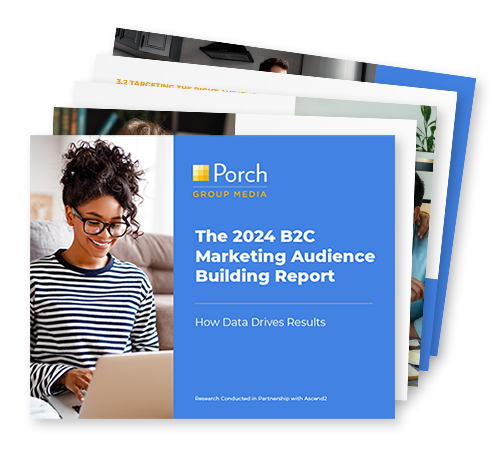Understanding and catering to the diverse needs of consumers is crucial to succeed in today’s competitive environment. One effective way to achieve this is through segmentation strategies that align with every stage of the customer journey.
By tailoring your marketing efforts to address the unique preferences and behaviors of different segments, you can enhance engagement, drive conversions, and foster long-term loyalty.
What is the Customer Journey?
The customer journey refers to the series of steps or stages that a customer goes through when interacting with a brand, from initial awareness to post-purchase engagement and advocacy.
The customer journey is not linear; it can be complex and nonlinear, with customers moving back and forth between stages and touchpoints depending on their needs, preferences, and behaviors.
It can be influenced by various factors, including marketing efforts, customer service interactions, word-of-mouth recommendations, and personal experiences.
Segmentation Strategies for the Awareness Stage
At the awareness stage, your goal is to capture the attention of potential customers and introduce them to your brand. Segmentation at this stage can focus on demographics, interests, and online behavior.
Consider creating targeted content and ads that resonate with specific audience segments, ensuring relevance and capturing interest from the outset.
Segmentation Tips
Use Demographic Segmentation: Segment your audience based on demographics such as age, location, and income to create targeted messaging that resonates with specific groups.
Example: A restaurant chain segments its audience based on location and sends out promotional emails. For subscribers in warmer climates, they highlight outdoor patio dining, refreshing cocktails, and beach-inspired dishes. Meanwhile, for subscribers in colder climates, they focus on cozy indoor dining, comfort food, and seasonal specials.
Interest-Based Segmentation: Identify audience segments with similar interests or preferences and tailor your content and ads to appeal to these specific interests.
Example: An outdoor adventure company segments its audience based on interests and sends targeted Facebook ads promoting hiking and camping gear to subscribers who have shown interest in outdoor activities.
Leverage Behavioral Data: Analyze online behavior such as website visits, content engagement, and social media interactions to understand what types of content or products are most appealing to different segments.
Example: A beauty brand analyzes website behavior and sends personalized email recommendations for skincare products based on specific skin concerns, such as acne or aging, to subscribers who have browsed relevant product pages.
Segmentation Strategies for the Consideration Stage
As customers move into the consideration stage, they’re evaluating their options and researching solutions to their needs. Segment your audience based on their engagement level and intent signals.
Tailor your messaging to address the pain points and preferences of each segment, providing valuable information and guiding them toward the next steps in their journey.
Segmentation Tips
Segment by Engagement Level: Identify high-engagement segments who have interacted with your brand multiple times but haven’t yet made a purchase. Personalize your messaging to address any lingering concerns or objections they may have.
Example: An online education platform segments its audience based on engagement level such as email opens, and sends personalized emails featuring success stories and testimonials from satisfied students to subscribers who have interacted with course content but haven’t enrolled yet.
Address Pain Points: Segment your audience based on common pain points or challenges they’re facing. Provide content and resources that offer solutions to these pain points and demonstrate how your product or service can help.
Example: A software company segments its audience based on common pain points and sends targeted blog posts addressing specific challenges faced by different segments, such as productivity tips for small business owners or cybersecurity best practices for IT professionals.
Use Retargeting: Retarget website visitors who have shown interest in your products or services but haven’t converted yet. Serve them personalized ads or content to remind them of your offerings and encourage them to take the next step.
Example: An e-commerce retailer retargets website visitors who abandoned their carts with personalized Facebook ads featuring the products they added to their cart, along with a limited-time discount code to incentivize them to complete their purchase.
Segmentation Strategies for the Decision Stage
In the decision stage, customers are ready to make a purchase and are comparing products or services. Segment your audience based on purchase intent, past interactions, and preferred channels.
Offer personalized recommendations, discounts, or incentives to nudge them toward conversion. Provide clear and concise information to help them make informed decisions quickly and easily.
Segmentation Tips
Segment by Purchase Intent: Identify segments that have demonstrated high purchase intent, such as adding items to their cart or visiting product pages multiple times. Offer personalized recommendations, discounts, or incentives to encourage them to complete their purchase.
Example: A travel agency segments its audience based on purchase intent and sends targeted emails featuring vacation package deals to subscribers who have previously searched for flights or hotels on the website.
Simplify Decision Making: Segment by preferred communication channel where possible and deliver relevant information in a format that aligns with each segment’s preferences. For example, some customers may prefer to complete their purchase online, while others may prefer to speak with a sales representative over the phone.
Customize your messaging and support options to accommodate each segment’s preferred channel, making it easier for them to complete their purchase.
Example: To accommodate customers who prefer booking online, a travel company offers a user-friendly website interface with live chat support for instant assistance. For those who prefer personalized guidance, the company provides a dedicated toll-free number staffed by agents trained to assist with itinerary planning and booking arrangements.
Segmentation Strategies for the Post-Purchase Stage
The journey doesn’t end once a customer makes a purchase. Segmentation at this stage can focus on customer loyalty, satisfaction, and advocacy. Identify loyal customers and brand advocates, and nurture these relationships through targeted communications, exclusive offers, and loyalty programs.
Encourage satisfied customers to leave reviews, share their experiences, and become advocates for your brand.
Segmentation Tips
Segment by Purchase History: Segment customers based on their past purchases to offer personalized recommendations for related products or complementary services.
Example: An online retailer segments its audience based on past purchases and sends personalized email recommendations for complementary products or accessories based on previous purchases.
Reward Loyalty: Identify loyal customers and offer them exclusive rewards, discounts, or VIP perks to show appreciation for their continued support.
Example: A coffee shop segments its audience based on loyalty status and offers exclusive discounts and rewards to repeat customers, such as a free coffee after every fifth purchase or early access to new menu items.
Segmentation Strategies for the Retention and Advocacy Stage
Retaining existing customers and turning them into brand advocates is crucial for long-term success. Segment your audience based on their engagement history, feedback, and advocacy level.
Provide ongoing value through personalized content, rewards, and VIP experiences. Encourage loyal customers to refer friends and family, participate in loyalty programs, and share user-generated content.
Segmentation Tips
Identify Brand Advocates: Segment customers who have shown a high level of engagement and advocacy for your brand. Encourage them to become brand ambassadors by offering rewards for referrals or user-generated content.
Example: A fitness brand identifies brand advocates among its customers who frequently share workout photos and testimonials on social media and invites them to join an exclusive ambassador program, offering perks such as free merchandise and VIP event invitations.
Provide Ongoing Value: Segment customers based on their interests or preferences and deliver personalized content, offers, or experiences that align with their needs.
Example: A subscription box service segments its audience based on preferences and sends personalized product recommendations and content, such as recipe ideas or styling tips, tailored to each subscriber’s interests.
Foster Community: Create exclusive communities or loyalty programs for your most loyal customers. Encourage them to connect, share experiences, and advocate for your brand organically.
Example: An online community platform segments its audience based on engagement level and encourages active members to participate in exclusive forums and events, fostering connections and encouraging user-generated content sharing.
Segmentation strategies tailored to each stage of the customer journey are essential for delivering relevant and personalized experiences that drive engagement, conversions, and advocacy.
Conclusion
By understanding the unique needs and preferences of your audience at each stage, you can create targeted campaigns that guide them seamlessly through the journey, fostering lasting relationships and maximizing the value of every interaction.





